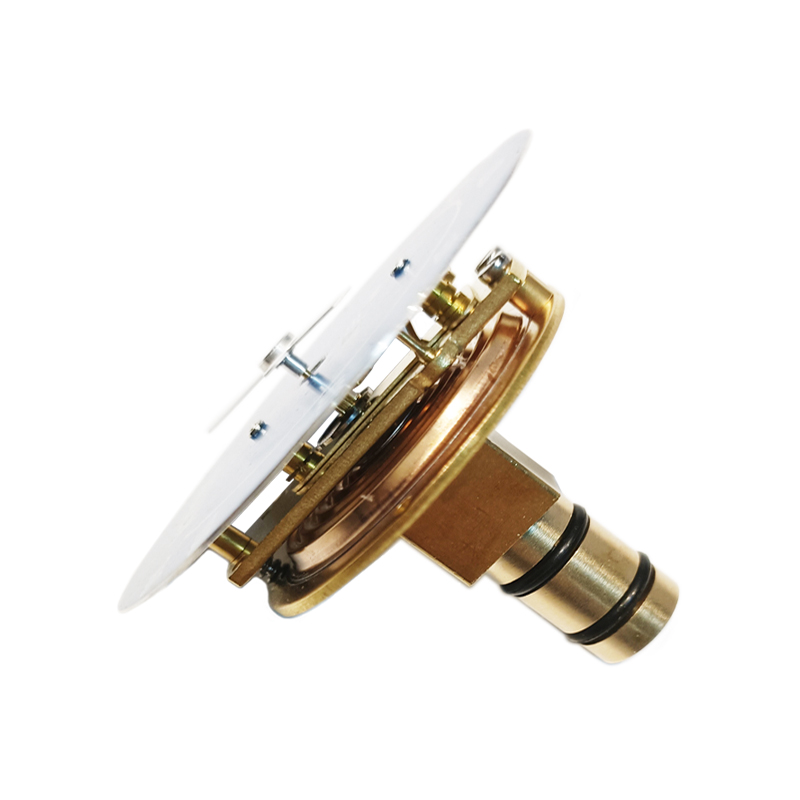
Jul . 29, 2024 03:31 Back to list
High Temperature Differential Pressure Gauge for Reliable Measurement in Extreme Conditions and Applications
Understanding High Temperature Differential Pressure Gauges
Differential pressure gauges are critical instruments used in various industrial applications to measure pressure differences between two points. Among these, high temperature differential pressure gauges are specifically designed to operate in extreme temperature environments. This article delves into the importance, applications, and functionalities of high temperature differential pressure gauges, emphasizing their significance in ensuring safety and efficiency in various processes.
What is a Differential Pressure Gauge?
A differential pressure gauge measures the pressure difference between two points. This measurement is essential in numerous processes, as it can indicate flow rates, filter condition, and fluid levels. The basic operation consists of two pressure sensing ports; one port measures high pressure, while the other measures low pressure. The gauge displays the difference, allowing operators to monitor system performance efficiently.
Importance of High Temperature Applications
High temperature environments can be found in industries such as chemical processing, oil and gas, power generation, and more. In these settings, ductile materials could fail, leading to inaccurate measurements or potentially hazardous situations. High temperature differential pressure gauges are specifically designed to withstand elevated temperatures, ensuring that readings remain reliable and accurate even in challenging conditions.
These gauges often utilize materials that can endure thermal expansion and contraction, making them robust against temperature-induced stresses. Additionally, they may incorporate specialized seals and components that prevent leakage and maintain calibration under extreme conditions.
Applications of High Temperature Differential Pressure Gauges
1. Chemical Processing In chemical manufacturing, reactions can generate high temperatures and pressures. Differential pressure gauges are employed to monitor the pressure differential across reactors and separators to ensure safe and efficient operation.
high temp differential pressure gauge product

2. Oil and Gas Sector The exploration and processing of oil and gas often occur under high temperature and pressure. Here, these gauges help monitor flow rates in pipelines and determine the condition of filters, ensuring that any blocks are detected early before they lead to costly downtime.
3. Power Generation In power plants, differential pressure gauges are crucial for managing boiler operations and monitoring steam pressures. They help optimize energy generation processes and monitor equipment health, contributing to improved plant efficiency and safety.
4. HVAC Systems In heating, ventilation, and air conditioning systems, high temperature differential pressure gauges are used to monitor filter conditions and airflow. This ensures system efficiency, leading to better energy consumption and environmental control.
Key Features to Consider
When selecting high temperature differential pressure gauges, several features should be considered
- Temperature Rating Ensure the gauge is rated for the specific temperature range of the application. - Material Compatibility The materials used in the gauge should be compatible with the fluids and gases it will be measuring. - Accuracy and Calibration Look for gauges with high accuracy ratings and easy calibration processes to ensure ongoing reliability. - Connection Types Depending on the system design, different connection types (flanged, threaded, etc.) may be required. - Response Time In applications where conditions can change rapidly, a gauge with a fast response time may be essential.
Conclusion
High temperature differential pressure gauges are indispensable in various industries, providing critical insights into system operations under extreme conditions. Their robust design ensures safety and efficiency, allowing industries to operate without the risk of equipment failure or inaccurate readings. As technology advances, these gauges continue to evolve, improving their reliability and capabilities, further cementing their role as a cornerstone in industrial operations. Understanding the importance and functionality of these gauges can help operators make informed decisions that enhance efficiency and safety in their processes.
-
High-Precision 5 Valve Manifold Differential Pressure Gauge Suppliers
NewsApr.29,2025
-
High-Precision Diaphragm Vacuum Pressure Gauges Manufacturers & Quotes
NewsApr.29,2025
-
Omega Differential Pressure Gauges High Accuracy & Durability
NewsApr.28,2025
-
Low Pressure Differential Pressure Gauges Precision Solutions & Quotes
NewsApr.28,2025
-
Digital Diaphragm Pressure Gaauge Precision Measurement & OEM Quotes
NewsApr.28,2025
-
Differential Pressure Gauge China Price High-Accuracy & Best Quotes
NewsApr.28,2025
